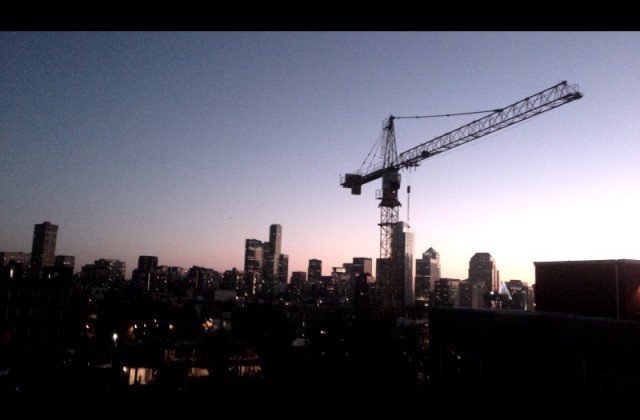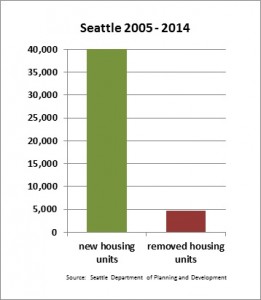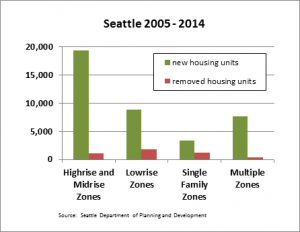Out With (A Few of) the Old, In With (Lots of) the New
This week I was on KING 5 News pushing back on the idea that a moratorium on new housing would actually help prices in Seattle. I said what we’ve been saying over and over, slowing the construction of new housing is a recipe for scarcity, and scarcity means higher prices. People love our city and they want to work and live here now more than ever and that is a great thing.
But some people in Seattle want to shut the door to new jobs and new housing in the name of “saving” existing affordable housing. Here’s what Jon Fox said in a recent editorial in Real Change. He wants the City Council and Mayor to:
Establish a moratorium on issuing residential construction permits in all neighborhoods where rates of growth already exceed levels needed to meet their 2024 regional growth targets.
and
Require any developer tearing down low-income housing to replace those units one-for-one, and give low-income tenants the first right to purchase their apartments before they’re sold to developers.
Listening to Fox and his allies like Councilmember Kshama Sawant one would think that new growth going on in Seattle had wiped out a lot of existing housing. While it is true that new construction often demolishes existing housing, just how many homes were removed and replaced with new housing?
Here is a chart that shows a comparison of new housing units built compared to units removed from use or demolished (click on chart for larger image).
The story that moratorium advocates tout–that new housing construction comes largely at the expense of existing housing–simply isn’t true. The facts point to a different story; over a decade 40,000 housing units were built while less than 5,000 units were removed from use or demolished. Each one of those housing units has a story, functioning as a home for real people and families. But Seattle has been able to grow and create lots of housing without wiping out large swaths of existing homes.
And where was the growth and the demolition?
Less than half of the new homes were built in highrise and midrise zones (the places where Fox says all the supposed harm is being done) and the high and midrise zones had the fewest existing homes demolished. That’s because that construction often happened on existing parking lots or retail uses.
The lowrise zone saw the most existing housing units removed compared to new units, which shows that much of the growth there did not come at the expense of residual single-family homes in that zone. In single family zones it’s important to note that that growth was more single family homes taking the place of fewer single family homes, and not the result of up zones. It’s also hard to argue that the homes taken down were all “affordable” by the official definition since the removed homes weren’t uniform in their location or type.
And how did Seattle do in creating more affordable units during that same period? In 2012 the City reported
$13.8 million will support eight housing developments with 508 affordable apartments. An additional $3 million was awarded to three previously funded projects for building improvements and to address a financing gap. The eight new projects will result in over $137 million in total capital investment, creating jobs and generating state and local revenues. These projects bring total rental housing production to 1,371 units, well on the way to meeting the Levy’s seven year goal of 1,670 units.
The City’s levy effort alone, over seven years, created 1,371 units; that’s roughly 30 percent of the units removed during a nine year period. This doesn’t include rental assistance and other programs to help offset housing costs for poor people.
When housing prices rise the best thing to do is to build more housing of all kinds in every zone, including more housing for people with less to spend. A moratorium on new housing during the period shown would certainly have “saved” some portion of the 4,727 units removed, but it would have meant tens of thousands of new people would have had no where to live in Seattle. That would have been terrible then, and it doesn’t sound like a good plan for the future either.




